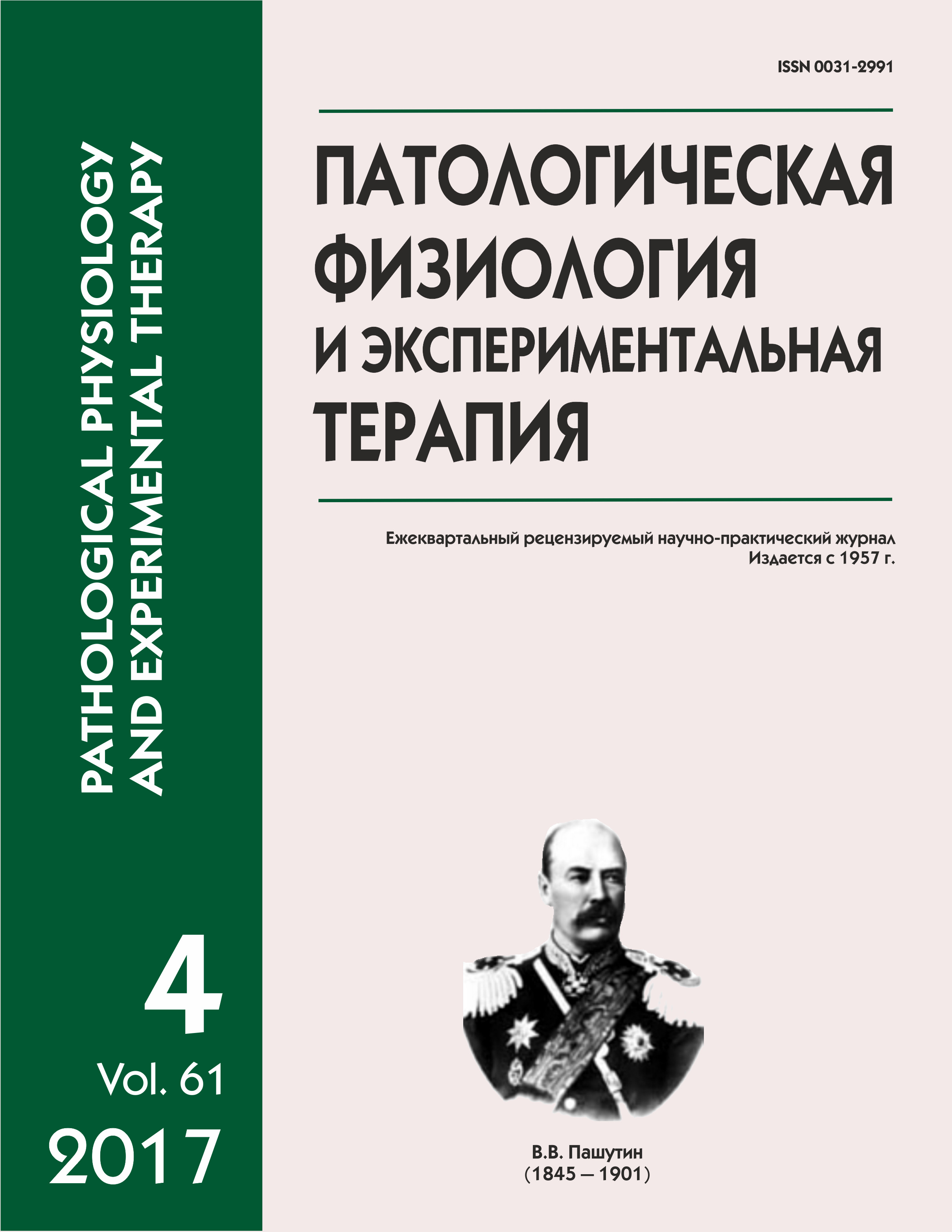Diagnostically important predictive factors for in-stent resteosis in patients with ischemic heart disease
Abstract
In recent years, growing attention has been paid to interventional treatment of ischemic heart disease (IHD). However, despite numerous clinical studies, the issue of in-stent restenosis following interventions remains unsolved. At present, studying molecular mechanisms of coronary restenosis along with searching for new, genetically determined predictors of in-stent restenosis has become relevant. Effects of NO synthases on development of endothelial dysfunction are above any doubt; however, studies focusing on the effect of NOS gene polymorphism on probability of in-stent restenosis are scarce and based on a small number of clinical observations. Therefore, the present study is highly relevant as it has resulted in development of new concepts on the role of NO-synthase genes in predisposition to in-stent hyperproliferation in patients with IHD. The aim of this study was to identify diagnostically significant, predictive factors for in-stent coronary restenosis in patients with ischemic heart disease and to determine their sensitivity and specificity using ROC curves. Methods. This study was based on data from a targeted evaluation of 484 patients with a verified diagnosis of IHD who were managed at the Department of Atherosclerosis and Chronic Ischemic Heart Disease of the Research Institute of Cardiology, Siberian Branch of the Russian Academy of Medical Sciences. Coronary artery stenting was performed for 210 patients divided into two groups, with restenosis (n = 60) and without restenosis (n = 150). The genotype was studied on isolated genomic DNA from whole venous blood using a standard non-enzymatic technique, as well as by studying NOS gene polymorphisms using the polymerase chain reaction (PCR). Results. Six predictors for in-stent restenosis in IHD were identified - stenosis length, per cent narrowing of the coronary artery (% stenosis), 894G/T polymorphism, history of arterial hypertension, presence of TCabGT11 and TTabGG11 haplotypes, and their sensitivity and specificity determined with ROC curves. In the Siberian population, development of in-stent restenosis most likely occurred in carriers of the TCabGT11 haplotype while the risk for restenosis was minimal in the presence of the TTabGG11 haplotype. Сonclusion. The 894 G/T eNOS gene polymorphisms are associated with a risk for restenosis and might be used as additional markers for the risk of restenosis following coronary stenting.
Downloads
References
2. Kim M.S., Dean L.S. In-Stent Restenosis. Cardiovasc Ther. 2011; 29(3): 190-8.
3. Kastrati A., Schomig A., Elezi S. et al. Predictive factors of restenosis after coronary stent placement. J am Coll Cardiol. 1997; 30: 1428-36.
4. Rydеn L., Grant P.J., Anker S.D., Berne C., Cosentino F., Danchin N. et al. ESC Guidelines on diabetes, pre-diabetes, and cardiovascular diseases developed in collaboration with the EASD: the Task Force on diabetes, pre-diabetes, and cardiovascular diseases of the European Society of Cardiology (ESC) and developed in collaboration with the European Association for the Study of Diabetes (EASD). Eur Heart J. 2013; 34(39): 3035-87.
5. Stone G.W., Ellis S.G., Cox D.A. et al. TAXUS-IV investigators. One-year clinical results with slow-release, polymer-based, paclitaxel-eluting TAXUS stent: the TAXUS-IV trial. Circulation. 2004; 109: 1942-7.
6. Gerald S. Collaterals: how important are they? Heart. 2007; 93(7): 778-9.
7. Agema W.R. et al. Current PTCA practice and clinical outcomes in The Netherlands: The real world in the pre-drug-eluting stent era. Eur.Heart J. 2004; 25(13): 1163-70.
8. Wijpkema J.S., Van Haelst P.L., Monraats P.S., Bruinenberg M. et al. Restenosis after percutaneous coronary intervention is associated with the angiotensin-II type-1 receptor 1166A/C polymorphism but not with polymorphisms of angiotensin-converting enzyme, angiotensin-II receptor, angiotensinogen or heme oxygenase-1. Pharmacogenet Genomics, 2006; 16(5): 331-7.
9. Kastrati A., Koch W., Gawaz М. et al. PlA polymorphism of glycoprotein IIIa and risk of adverse events after coronary stent placement. J Am Coll Cardiol, 2000; 36: 84-9.
10. Monraats P.S., Kurreeman F.A., Pons D., Sewgobind V.D., de Vries F.R., Zwinderman A.H. et al. Interleukin 10: a new risk marker for the development of restenosis after percutaneous coronary intervention. Genes Immun. 2007; 8(1): 44-50.
11. Tiroch K., Koch W., Mehilli J., Bottiger C., Schomig A., Kastrati A. P27 and P53 gene polymorphisms and restenosis following coronary implantation of drug-eluting stents. Cardiology. 2009; 112(4): 263-9.






